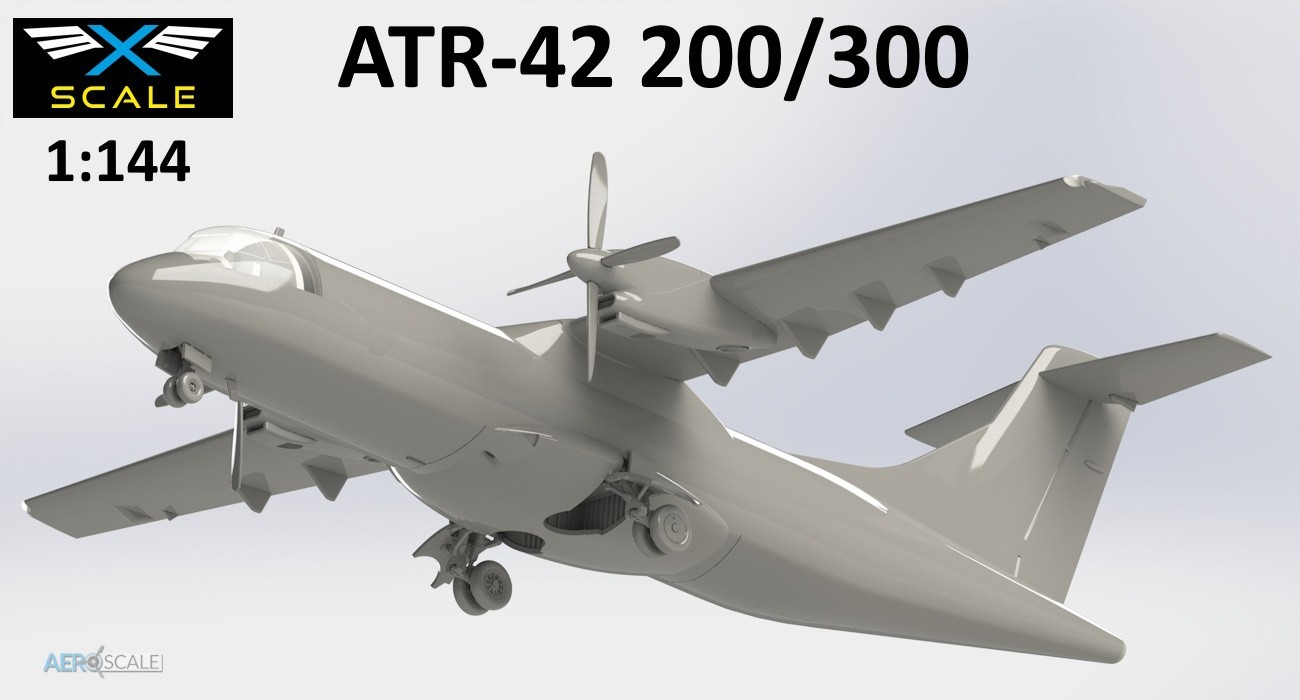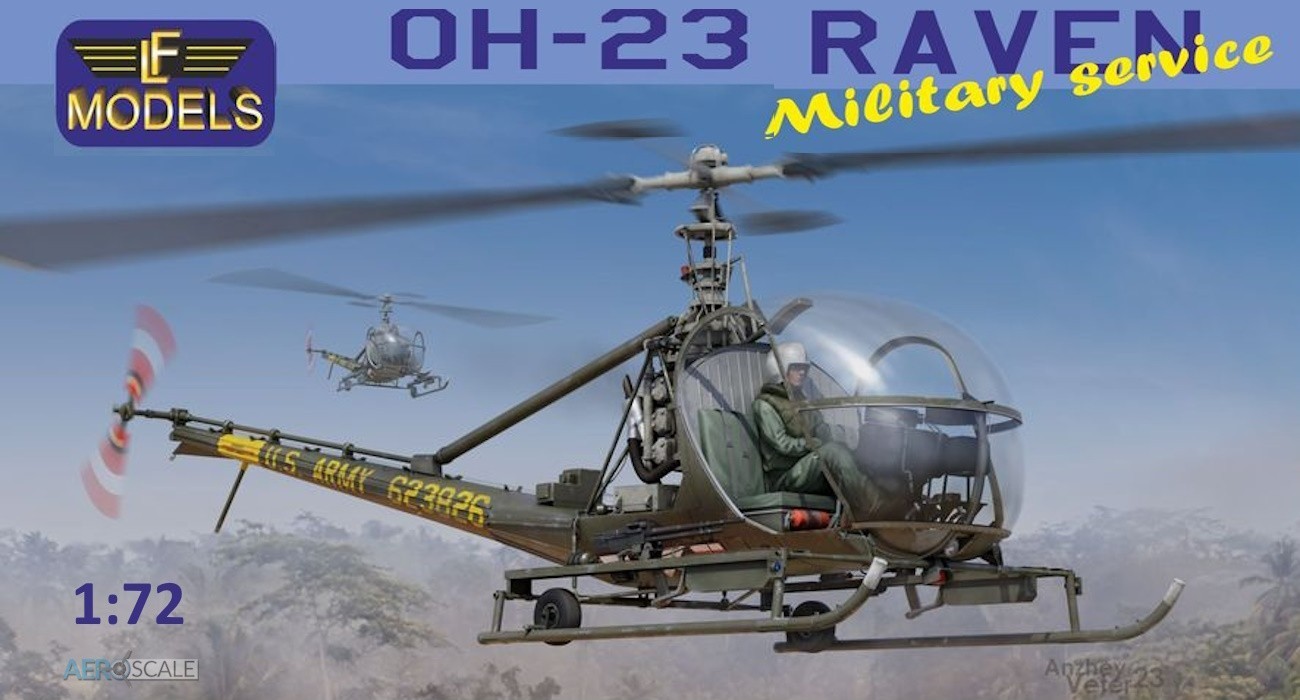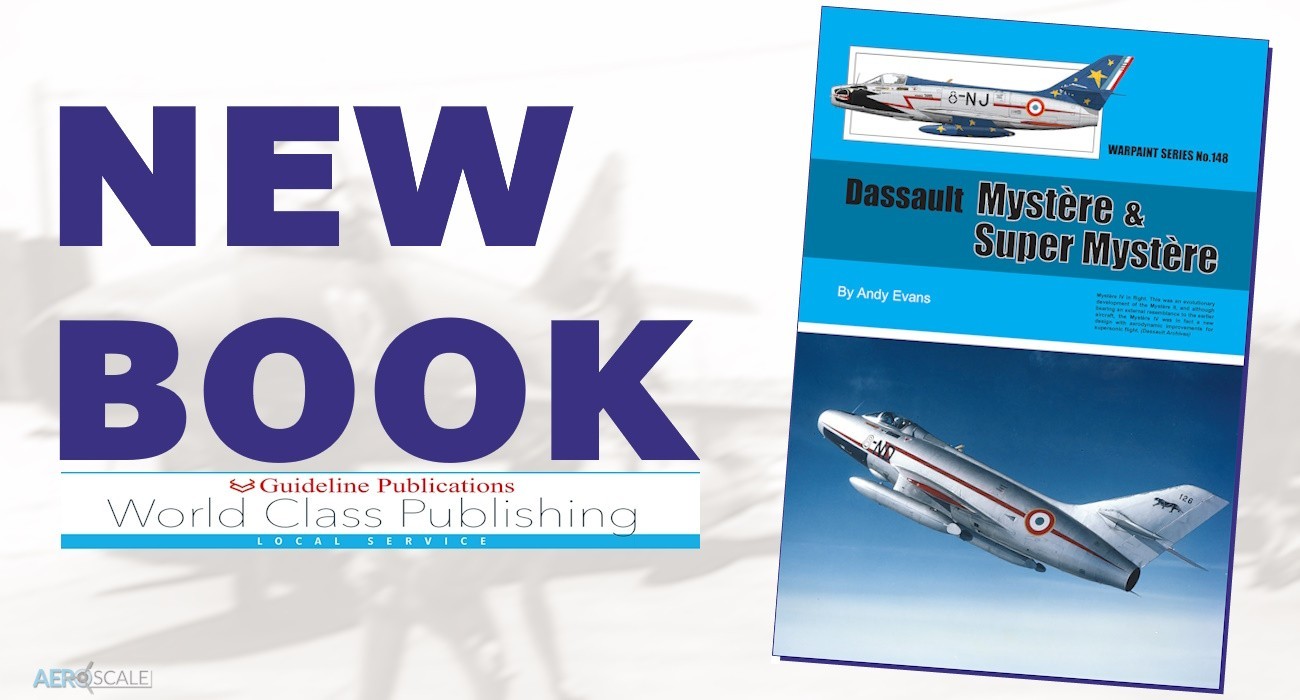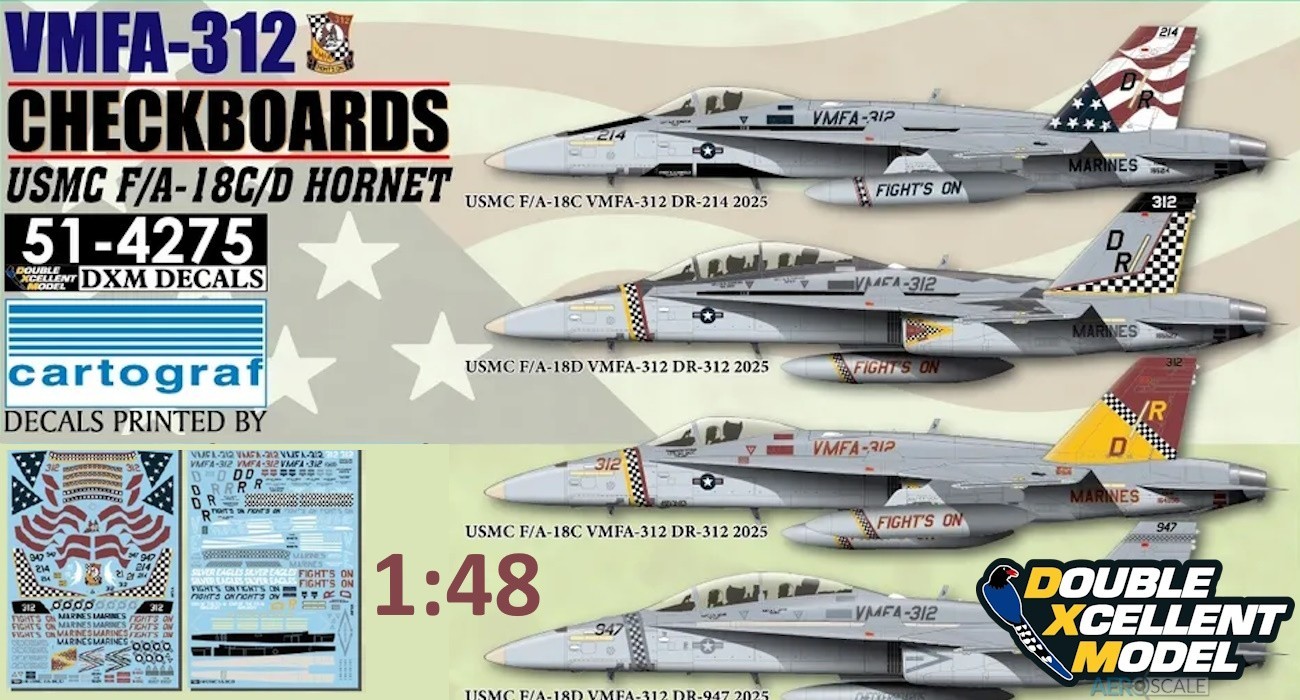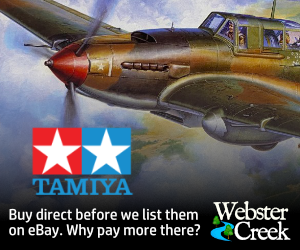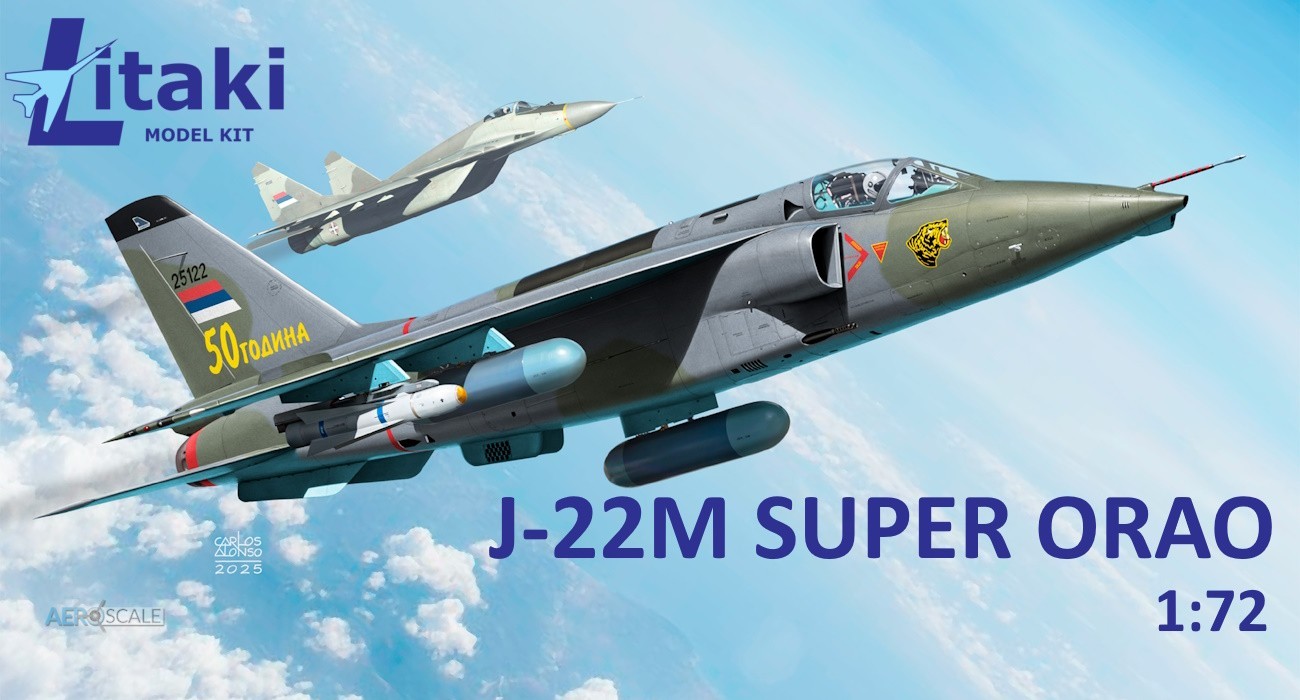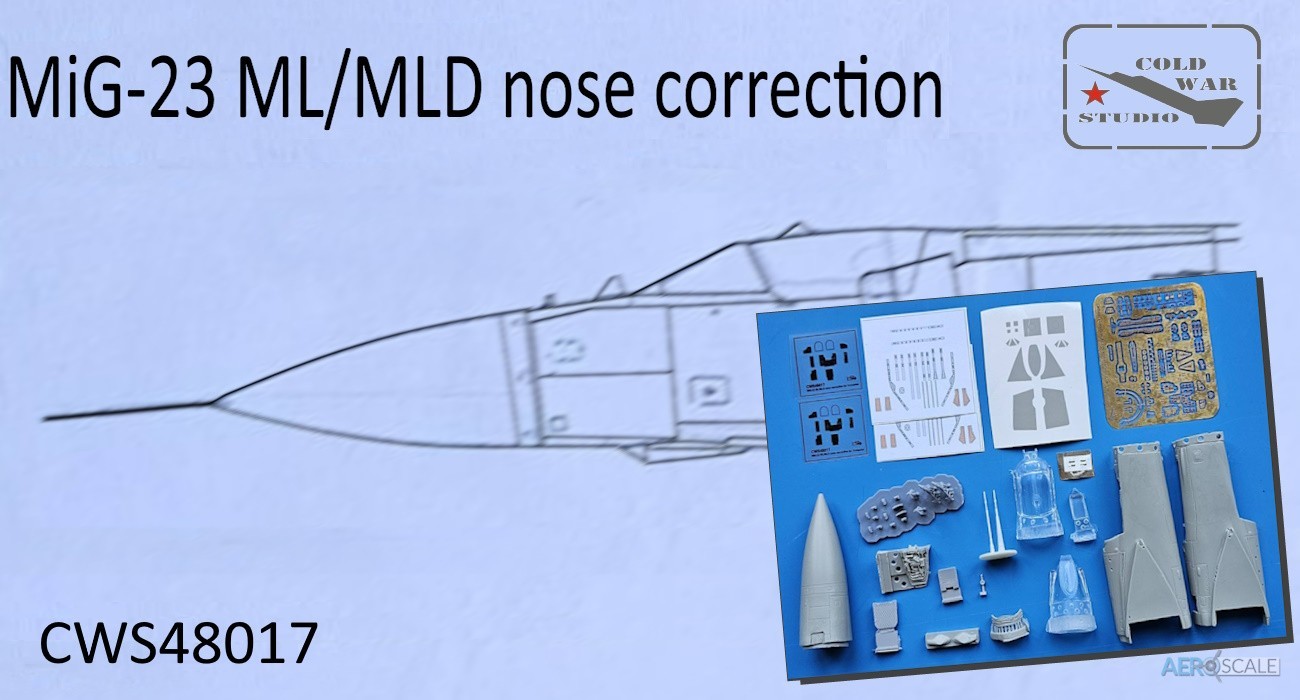
Aircraft Weapons of World War One is a book written by Tom Laemlein and published by Canfora. As the title indicates, this is a collection of photos of weaponry used in World War I on aircraft.
The book is an A4 softcover with 168 pages, printed on glossy paper and covers all types of weapons used from aircraft, including machine guns, cannons and bombs of both the Allies and Central Powers.
There are two or three photos per page, so they are usually of a good size, and the quality of the photos is generally very good, especially considering that they were taken over a hundred years ago.
The book opens with a four-page introduction that narrates the beginnings of military aviation, with tests at about the same time as civil aviation in the United States, and the subsequent development in Europe. On these pages we also find photos supporting the text with some of the weapons and aircraft used.
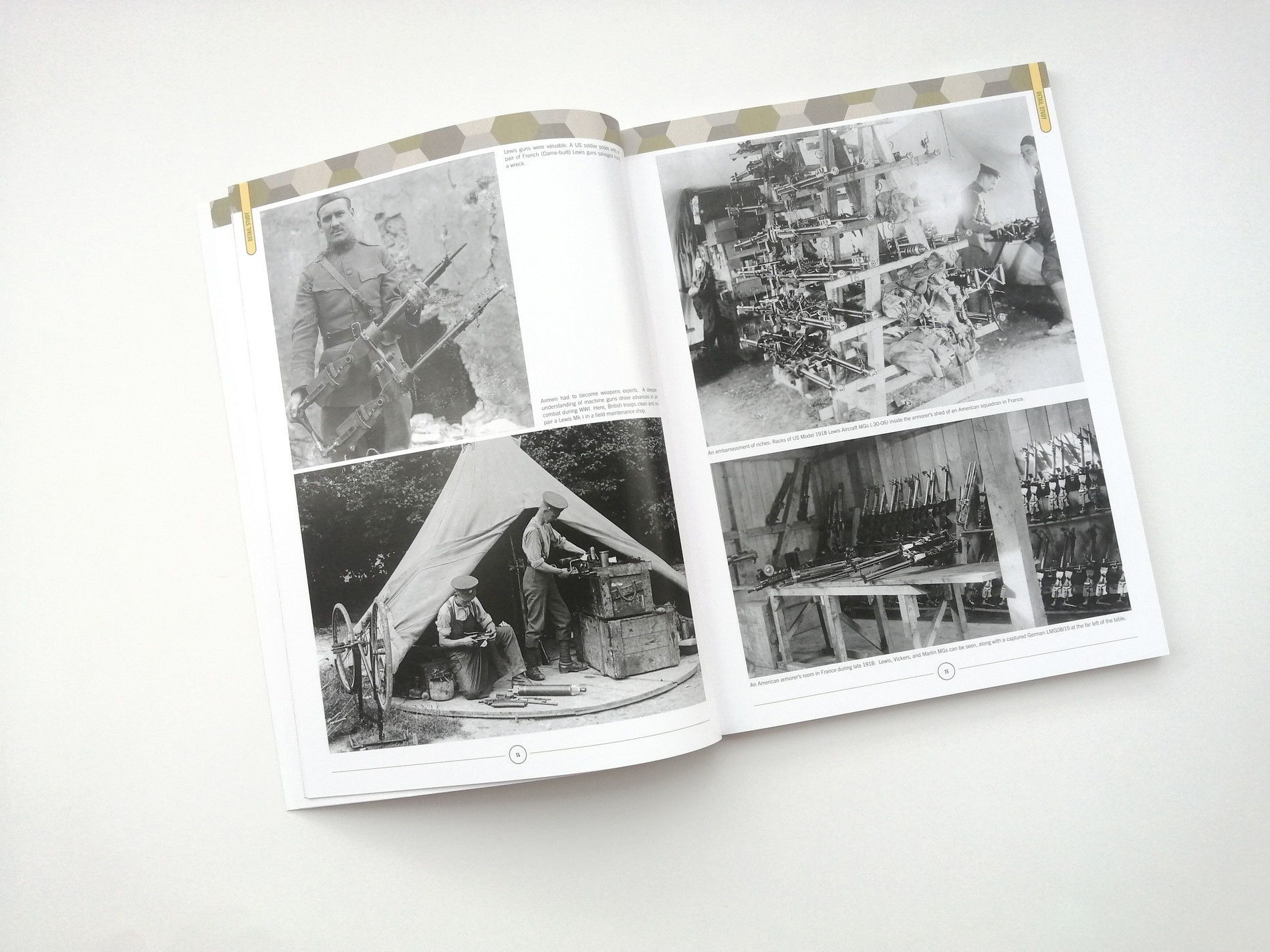
This is followed by a study of the main machine guns of the time, with a brief history of their development and use, as well as numerous photos. There are high quality photos of the machine guns on display which show many details, both ground mounted and already installed on aircraft. The guns covered are the Lewis, Vickers, Marlin, Spandau, Parabellum, Colt-Browning, Schwarzlose, Hotchkiss, Fiat-Revelli and Madsen.

Aerial Gunnery Training is the next section, with photos of ground-based gunnery training. Shown are various devices used to mount the machine guns and practice. There are photos of wooden mounts, tripods and moving models for aiming as well as practical classes.

The next four sections of the book deal with aircraft mounted machine guns and are the main subject of the book. It is divided into forward firing guns (Allied and Central Powers) and observer's guns (Allied and Central Powers). There are 86 pages in total, with two or three large photos per page of a wide range of aircraft. There are detail and general photos of the aircraft, and all have explanatory captions.
In some cases the captions have been placed inside the photo, where they do not hide any detail, to allow the photo to be printed larger.
Some of the aircraft covered are different models of the Nieuport, Breguet,Spad, Sopwith, Morane-Saurier, Fokker, Capron, Albatross and more.
Photos are very varied in subject and aircraft, including close-up of the machine guns, general views of the aircraft, cockpit details and even some crashed examples. Therefore it is not only a photo collection of aircraft weapons but also of WWI aircraft -always showing their guns.
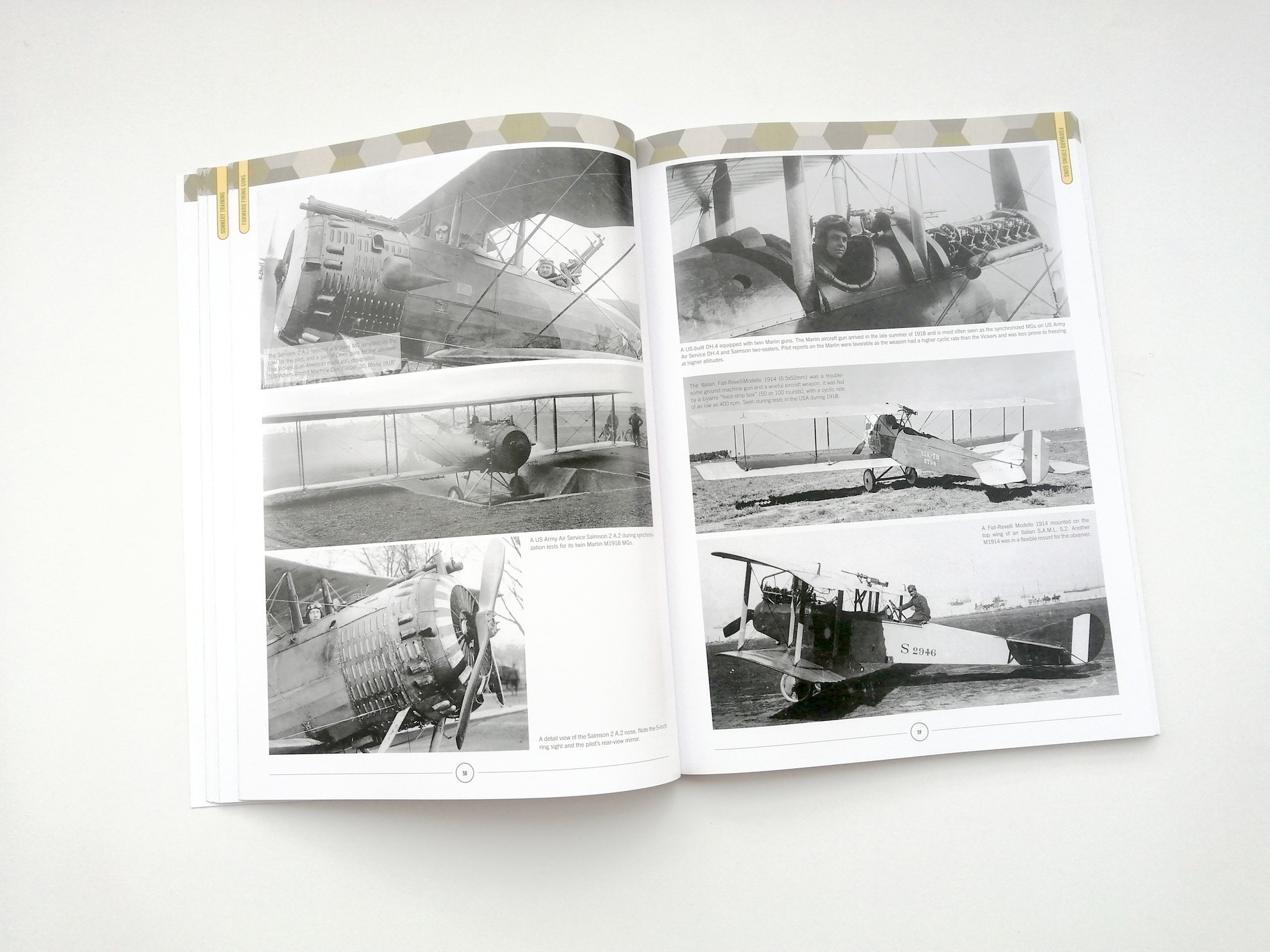
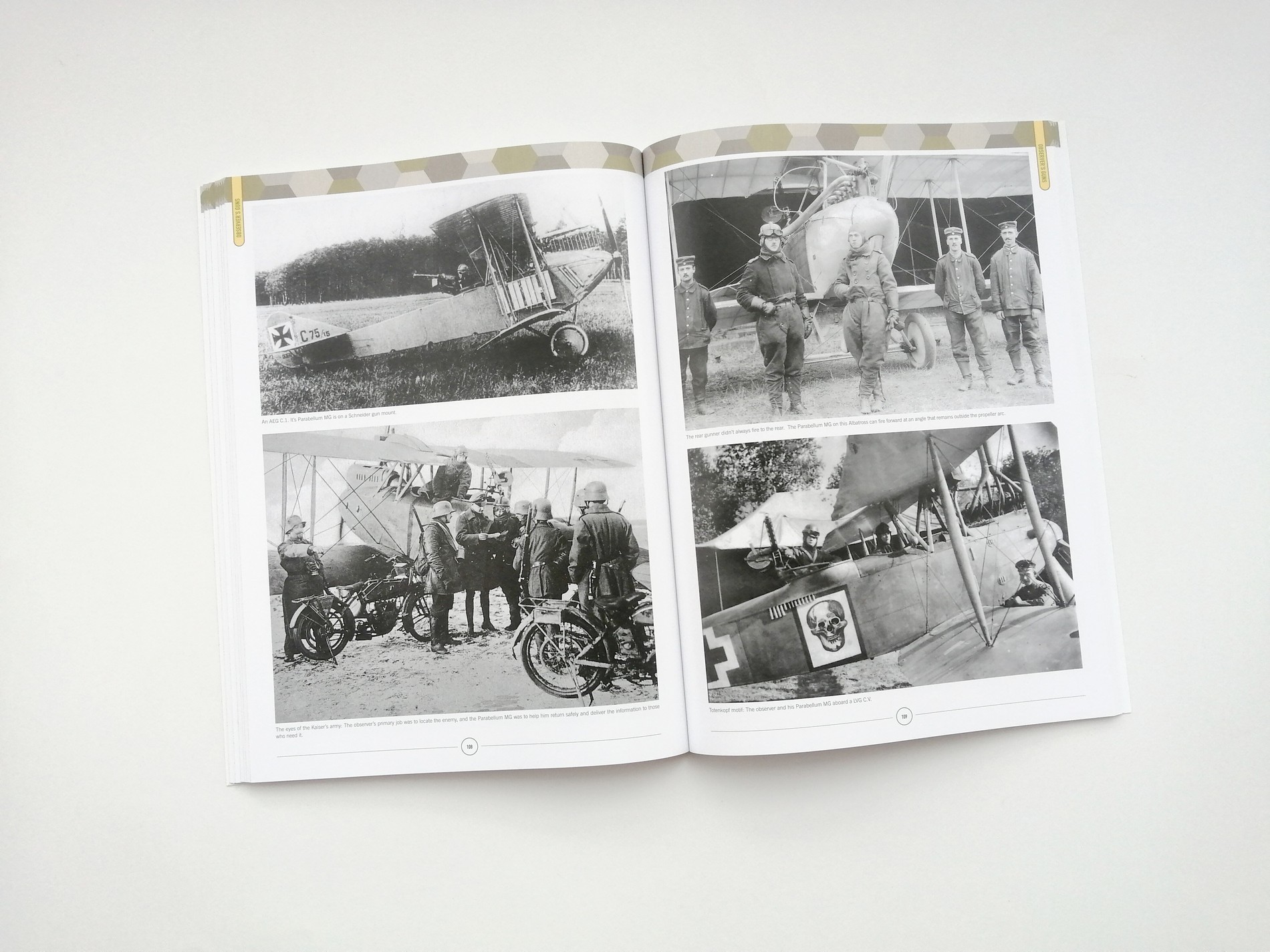
The First World War also saw the use of bombs and grenades in addition to machine guns, and these have their own section in the book.
Shown are photos of a good variety of bombs of varying sizes, from the 2.5 kg hand-dropped bombs to the other 100 kg bombs.
Finally there is also a small section on cannons and recoilless guns. Given the size and capacity of aircraft at this time, it was not very common to arm them with cannons but there were still some cases which are collected here. For example there are 20mm Becker's or the 37 mm Cow, Hotchkiss or Puteau guns.

Conclusion
This is an interesting book about an specific subject that at least for me was little known. The collection of photos is the main focus, with minimal text to put them in context. The photos are of good size and quality: not being front line images, the photographer usually had time to ensure a correct exposure and focus. The wide coverage extends to weapons of all types used in early air combat and ground attack, and by both sides in WWI.
A recommended volume for anyone with an interest in the first combat aircraft that fought the Great War, and specifically the weapons they carried.



















